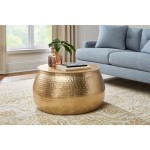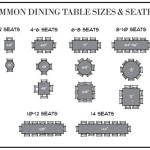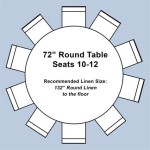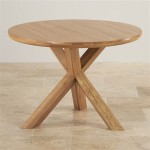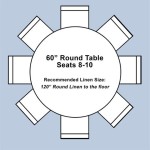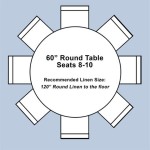Can Placemats Enhance a Tablecloth Setting?
The question of whether placemats can or should be used on a tablecloth is a common one for those seeking to elevate their table settings. The answer is not a simple yes or no, as it depends heavily on the desired aesthetic, the functionality required, and the specific materials involved. Understanding the nuances of combining placemats and tablecloths allows for the creation of visually appealing and practical dining environments.
Traditionally, tablecloths served as a primary layer of protection for the table surface, shielding it from scratches, spills, and heat damage. They also contributed to the overall formality of the dining atmosphere. Placemats, on the other hand, offered a more localized form of protection, typically placed directly under individual place settings. This more direct approach made them suitable for everyday use and less formal occasions. However, contemporary design often encourages breaking from traditional norms, leading to experimentation with layering and textures. The decision to combine these elements is therefore a matter of stylistic preference and practical consideration.
Aesthetic Considerations
A significant aspect of using placemats over a tablecloth lies in the aesthetic impact it creates. The combination allows for playing with different colors, textures, and patterns, adding depth and visual interest to the table setting. For example, a neutral-colored tablecloth can serve as a subtle backdrop for vibrant or intricately designed placemats. Conversely, a patterned tablecloth may benefit from simpler, more understated placemats that complement the design without overwhelming it.
The level of formality also plays a role. A crisp, white linen tablecloth paired with elegant placemats can enhance a sophisticated dining experience. Meanwhile, a more casual setting might involve a textured cotton tablecloth and rustic placemats made of natural materials like jute or bamboo. The key is to ensure that the chosen elements work together harmoniously to create a cohesive and intentional look. Contrasting colors can be used for a bolder statement, while similar tones create a more subtle and refined atmosphere.
Furthermore, the shape of both the tablecloth and the placemats should be considered. A rectangular tablecloth complements rectangular or oval placemats, while a round tablecloth often pairs well with circular or square placemats. Experimenting with different combinations can lead to surprising and delightful results, but careful planning is essential to avoid a cluttered or haphazard appearance.
Functional Advantages
Beyond aesthetics, combining placemats and a tablecloth can offer practical benefits. While the tablecloth provides a general layer of protection, placemats offer more targeted defense against spills and heat. A placemat can be easily removed and cleaned if a spill occurs, minimizing the need to wash the entire tablecloth. This is particularly useful for homes with children or for events where accidental spills are more likely.
Additionally, placemats can help to define individual place settings, creating a sense of order and organization on the table. This is especially important for larger gatherings where multiple dishes and utensils are used. The placemat serves as a visual anchor, guiding guests to their designated space and preventing clutter.
The material of the placemat also impacts its functionality. Heat-resistant placemats, such as those made of cork or silicone, offer superior protection against hot dishes and prevent damage to the tablecloth and the table beneath. Absorbent placemats made of cotton or linen can help to soak up minor spills, preventing them from spreading. The choice of material should therefore be based on the specific needs and demands of the dining environment.
Another functional benefit is the added layer of sound dampening. Tablecloths already absorb some sound, but adding placemats, particularly those made of thicker materials like felt or woven fabrics, can further reduce noise during meals. This can create a more pleasant and relaxed dining atmosphere, especially in homes or restaurants with hard surfaces that tend to amplify sound.
Material Compatibility and Care
The success of combining placemats and a tablecloth also depends on the compatibility of the materials used. Considering the texture, weight, and care requirements of each item is crucial to ensure both longevity and aesthetic harmony. For instance, delicate linen tablecloths may be best paired with soft, lightweight placemats to prevent snagging or damage. Heavier, more durable tablecloths can accommodate a wider range of placemat materials.
Different materials also require different cleaning methods. It is essential to choose placemats and tablecloths that can be easily cleaned and maintained. For example, a high-maintenance silk tablecloth might not be the best choice for everyday use, especially if paired with placemats that tend to stain easily. In such cases, a more practical alternative like a stain-resistant polyester tablecloth might be preferable.
The washing instructions for both the tablecloth and the placemats should be carefully considered. It is generally advisable to choose items that can be machine washed and dried for ease of care. However, delicate materials may require hand washing or professional cleaning. Mismatched care requirements can lead to one item being neglected or damaged in an attempt to properly care for the other.
Furthermore, the texture of the materials can impact the overall look and feel of the table setting. Smooth tablecloths pair well with textured placemats, creating an interesting contrast. Conversely, textured tablecloths might be best complemented by smoother placemats. The key is to avoid overwhelming the visual senses with too much of the same texture. Balance and harmony are essential for achieving a sophisticated and inviting table setting.
The choice of fabric also affects the durability of the setup. Natural fibers like cotton and linen are breathable and aesthetically pleasing, but they are also more prone to wrinkling and staining than synthetic fibers. Synthetic fabrics, such as polyester and rayon, are more resistant to wrinkles and stains, but they may not have the same luxurious feel as natural fibers. A blend of natural and synthetic fibers can offer a good balance of aesthetics and practicality.
In summary, the decision to use placemats on a tablecloth is dependent on a variety of factors, including the desired aesthetic, the practical needs of the dining environment, and the compatibility of the materials used. By carefully considering these elements, one can create a table setting that is both visually appealing and functionally sound. The combination of placemats and a tablecloth allows for greater customization and creativity, opening up a wide range of possibilities for enhancing the dining experience.

How To Set The Table With Placemats
The Great Debate Placemats Or Tablecloths Which Are Better Lc Studios

How To Use Placemats Ultimate Style Guide French Affair

How To Use Placemats Ultimate Style Guide French Affair

20 40 60 Etiquette Setting The Table Tone For Your Dinner Party

How To Set The Table With Placemats

Should You Use Placemats With A Tablecloth Combinations Positioning Tips Tablecoversnow Com

7 Tips For Storing Your Table Linens

How To Match Tablecloth Napkins Runners And Placemats 4 Styles For All Occasions

Table Runners And Placemats Guide Crate Barrel
Related Posts


